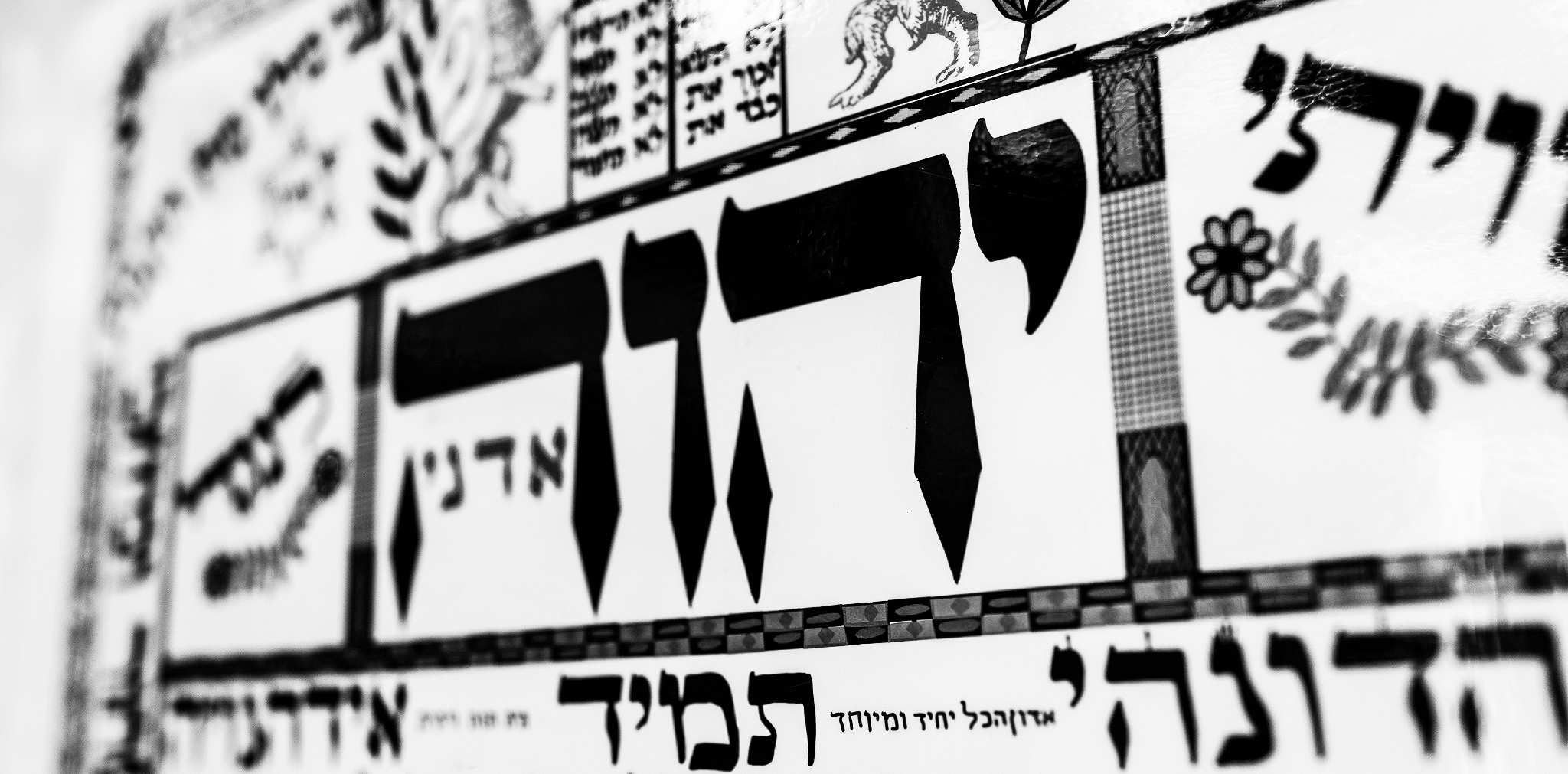 “Hear O Israel, the Lord is our God, the Lord is one” (Deut. 6:4). These famous words, usually referred to as “the Shema” (from the Hebrew word “hear”), distill the central affirmation of faith for the Jewish people, and indeed the Shema is often the very first word of Torah that a Jewish child learns. During its recitation in the synagogue, Orthodox Jews pronounce each word very carefully and cover their eyes with their right hand. Many Jews recite the Shema at least twice daily: once in the morning and once in the evening. The text of the Shema is meticulously written on a small scroll which is then rolled up and put inside a mezuzah. In a sefer Torah, or a handwritten Torah scroll, the two Hebrew letters Ayin (ע) and Dalet (ד) are enlarged in the opening sentence of the Shema. Together, these letters form the word ’ed (עֵד), which means “witness,” suggesting that the Shema is a testimony of the sovereignty of God and our primary duty to love Him with our whole being.
“Hear O Israel, the Lord is our God, the Lord is one” (Deut. 6:4). These famous words, usually referred to as “the Shema” (from the Hebrew word “hear”), distill the central affirmation of faith for the Jewish people, and indeed the Shema is often the very first word of Torah that a Jewish child learns. During its recitation in the synagogue, Orthodox Jews pronounce each word very carefully and cover their eyes with their right hand. Many Jews recite the Shema at least twice daily: once in the morning and once in the evening. The text of the Shema is meticulously written on a small scroll which is then rolled up and put inside a mezuzah. In a sefer Torah, or a handwritten Torah scroll, the two Hebrew letters Ayin (ע) and Dalet (ד) are enlarged in the opening sentence of the Shema. Together, these letters form the word ’ed (עֵד), which means “witness,” suggesting that the Shema is a testimony of the sovereignty of God and our primary duty to love Him with our whole being.

When asked which of the various commandments was the “first commandment of all,” Yeshua responded by quoting the Shema: “The first of all the commandments is this: ‘Hear, O Israel; The Lord our God is one Lord, and you shall love the Lord your God with all your heart and with all your soul and with all your mind and with all your strength'” (see Mark 12:29-30).
Hebrew Lesson:

- Deut. 6:4 lesson card (pdf)
.
The “Three-in-One” Affirmation
The Shema is actually more than just the famous six words “Shema Yisrael, Adonai eloheinu, Adonai echad,” but is composed of three distinct parts linked together into a unity:
.
1. The Shema (Deut. 6:4): The core Hebrew admonition. Special emphasis is given to the first six Hebrew words of this passage (i.e., Shema Yisrael, Adonai Eloheinu, Adonai echad: “Hear, O Israel, the LORD is our God, the LORD is one”). After a pause, the Ve’ahavta (Deut 6:5-9) is then recited, which stresses the commandment to love the Lord your God with all of your heart, soul, and might. Note that Yeshua combined the core admonition (i.e., Deut. 6:4) with the first verse of the Ve’ahavta (i.e., Deut 6:5) as the first great commandment” (see Mark 12:28-30).Of particular interest is what the declaration that God is “one” means. Interestingly, the word echad (“one”) in Hebrew can imply a unity in plurality (the word for “one and only one,” i.e., unique, is more often rendered as yachid). For example, Moses used the word echad in Genesis 2:24 when he wrote, “And they (husband and wife) will become one flesh” (i.e., basar echad). Moreover, in Exodus 26:6 the various parts of the Mishkan (i.e., “Tabernacle”) were to be constructed so that “it shall be one (echad) sanctuary,” and Ezekiel spoke of two “sticks” (representing fragmented Israel) that would be reunited into one: “and they shall be one (echad) stick in My hand” (Ezek. 37:19)..
2. The Vehayah (Deut. 11:13-21): This moving passage stresses the blessings that come through obedience to Adonai and the consequences that come through disobedience..
3. The Vaiyomer (Num. 15:37-41): This passage concerns the use of the tallit, a rectangular prayer shawl with four fringes (called tzitzit). One tzitz is attached to each corner of the tallit. The reason for wearing the tzitzit is to remind oneself to observe all of the commandments of the Lord.
